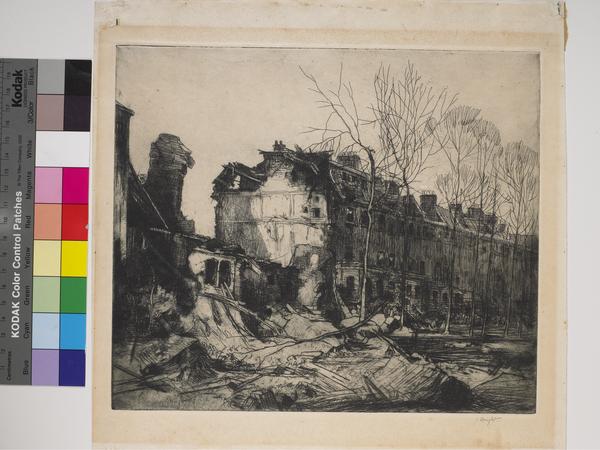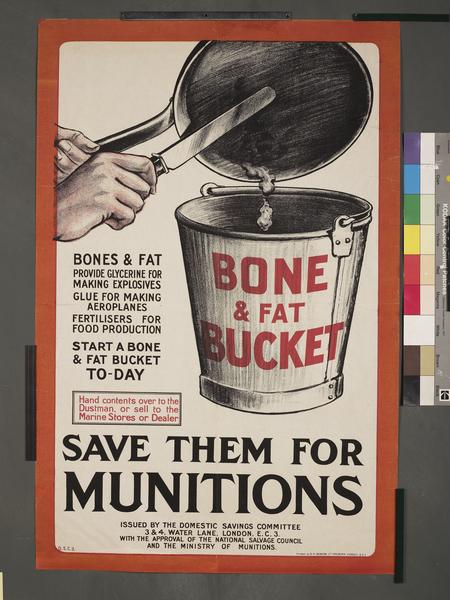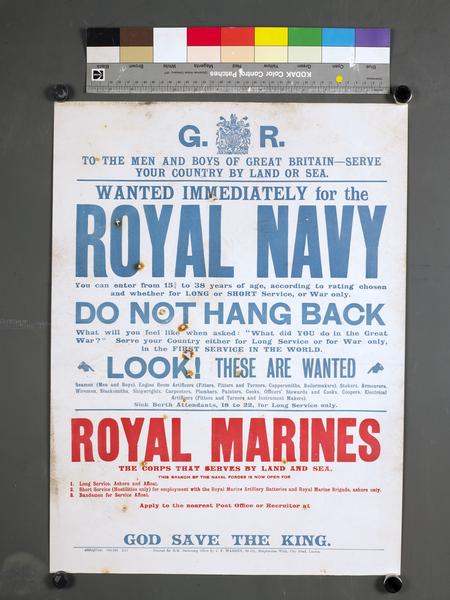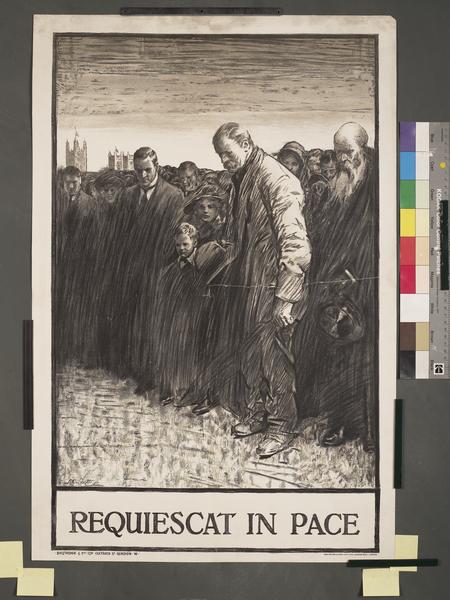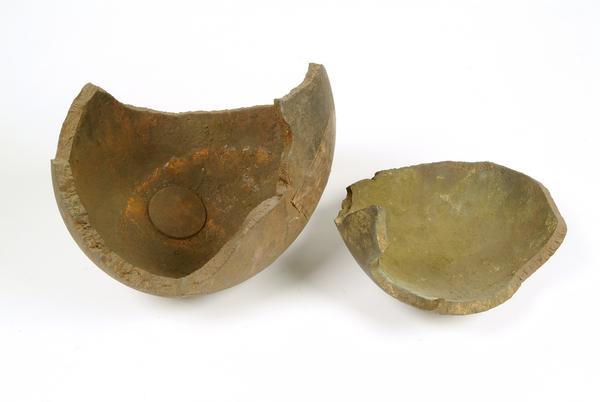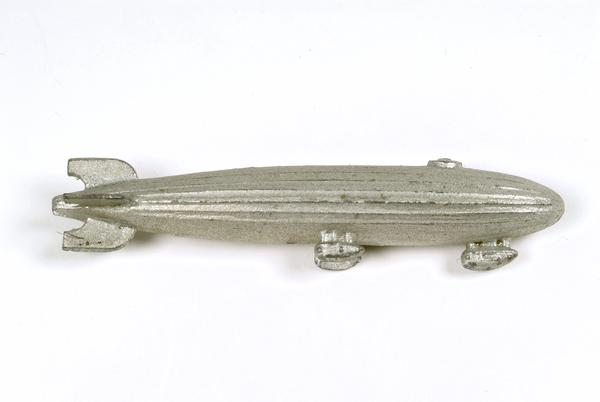The First World War air raids on London
During the First World War (1914–1918), the German air force used zeppelins and planes to bomb London, killing 668 people. It was the first time the city had been attacked from the air, and authorities struggled to protect Londoners.
Across London
31 May 1915 – 19 May 1918
A novel threat to daily life
The Blitz, Nazi Germany’s intense bombing campaign against Britain during the Second World War (1939–1945), is one of the most infamous chapters in London’s history. And yet, 20 years earlier, the city experienced many of the same terrors.
Between 1915 and 1918, the violence of the First World War reached London. German planes and airships, known as zeppelins, were used to target the capital in sporadic bombing raids, killing 668 Londoners and wrecking homes and businesses.
By the final year of the war, air-raid warnings rang out across a city in blackout, sensational air battles played out overhead, and Londoners took shelter in the Underground. It was a picture of what was to come in the Second World War.
In comparison, these raids were rarer and less damaging than the 1940s Blitz. London didn’t come close to surrender. Even so, the bombs introduced an unfamiliar feeling of vulnerability.
London in the First World War
Britain entered the First World War in August 1914. Over the next four years, more than 800,000 soldiers from across London, Britain and its empire died fighting in Europe, western Asia and North Africa.
Despite the battles taking place abroad, London was never immune. Devastating news arrived by post and press as the list of the dead grew ever longer. Hospitals accepted wounded and traumatised troops returning from the battlefields, and Belgian refugees fled to London in their thousands.
At times, you could even hear the sound of the guns firing in northern Europe.
In May 1915, a visitor reported, “London… looks distinctly more abnormal now – more soldiers, more bandages and limps, and more nurses – quite a sensational sense of strain.”
“Panic ran rampant”
Sylvia Pankhurst, 1915
Why was London targeted in the First World War?
London – the capital of Britain and its empire – was the military command centre. It was a transport hub for the flood of soldiers going to and from battle.
It was also an industrial powerhouse. The capital’s factories made ammunition, weapons and other crucial equipment. Its docks and shipyards moved goods where they were needed. Food imported into the city was vital for feeding the nation.
What are zeppelins?
Air balloons had been used in wars since the late 18th century, offering a useful view of the battlefield. This idea was evolved in the 19th century by a German general named Ferdinand von Zeppelin.
His first airship flew in 1900, constructed from a rigid metal frame containing several hydrogen-filled balloons. Long and shaped like a sausage, they had enough lift to carry propeller engines and an arsenal of explosives.
The first zeppelin raid on London
On the night of 31 May 1915, under a full moon, a single zeppelin floated over the city. It dropped dozens of grenades and fire-starting incendiaries, killing seven people across what were then suburbs in the north and east, such as Dalston, Shoreditch and Leytonstone. The first known hit was at 16 Alkham Road in Stoke Newington.
The Suffragette Sylvia Pankhurst described the effect in Hoxton and the East End: “Panic ran rampant.”
The next day, anger in London boiled over. Mobs attacked businesses they associated with the ‘enemy’. German and Austrian Londoners were assaulted and abused throughout the war.
Larger zeppelin raids came in spells in 1915 and 1916. Several involved more than 10 airships. The airships lacked the technology for precise navigation or accurate targeting. Bombs were often dropped almost at random, falling right across the capital.
Fear lingered after the explosions and the screaming. “The Zeppelin scare is just as if the whole place was in imminent fear of an earthquake,” reported the general John Monash, writing home from London to Australia.
Defending the city
To hinder the zeppelins as they looked for targets, lights across London were dimmed at night.
By July 1916, the city was defended by more than 64 anti-aircraft guns. These were aided by spotlights, and a squadron of planes equipped with incendiary bullets.
It took until 2 September 1916 for the first success, when a German airship was shot down in Hertfordshire, just north of London, by pilot Lieutenant William Leefe Robinson. People rushed to claim souvenirs from the wreckage.
There was a spectacular sequel on 1 October 1916, when a zeppelin was shot down north of London over Potters Bar, Hertfordshire. Set alight by incendiary bullets, the zeppelin crashed to the ground in a flaming wreck, watched in awe by tens of thousands of Londoners.
Besides one raid in 1917, London didn’t have to contend with zeppelins again.
German planes became the new threat
The First World War was the first conflict to see the widespread use of aircraft. After the zeppelin raids stopped, London was haunted by the ‘Gotha hum’ – the sound of a new heavy bomber plane, the Gotha.
The first serious Gotha raid was on 13 June 1917. Around 11.30am, in full daylight, 14 Gothas arrived above the capital. It was the worst attack of the entire war, killing 145 Londoners, including 18 children at a school in Poplar, east London.
Raising the alarm
For most of the war, Londoners were given no warning about the approaching planes and zeppelins. The government believed disruptive false alarms would be common. They predicted people would crowd to see the zeppelins, causing more casualties. In Hackney, locals organised their own patrols to keep watch.
Finally, in May 1917, following the start of the Gotha raids, a system of public warnings was introduced.
Loud maroons, a type of firework, were used to tell Londoners that they should seek shelter. Police officers would also blow their whistles and carry signs reading ‘take cover!’ When the raids were over, the ‘all clear’ was signalled by handbells or Boy Scouts playing bugles.
Taking shelter
It’s thought that 300,000 people were sheltering in London’s underground rail system every night by the end of September 1917.
Thousands more took shelter in the Rotherhithe and Blackwall road tunnels, as well as the Greenwich and Woolwich foot tunnels. Some Londoners also chose to leave the city when attacks were rumoured.
The last raids on London
London experienced over a dozen deadly raids by German planes from autumn 1917 to the early months of 1918.
These included the Harvest Moon raids, a six-day sequence of attacks starting on 29 September 1917. Featuring a new plane, the Giant, the raids killed 47 people.
The final air raid came on 19 May 1918. It involved 19 German planes – more than any other raid in the war. But in a sign of how London’s defences had improved, three of the German planes were shot down by British fighters and another two were destroyed by anti-aircraft guns.









